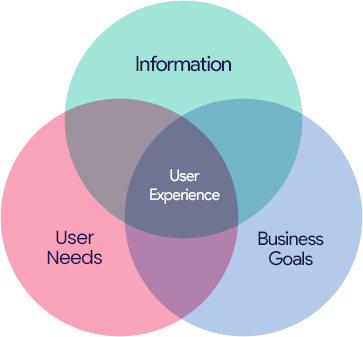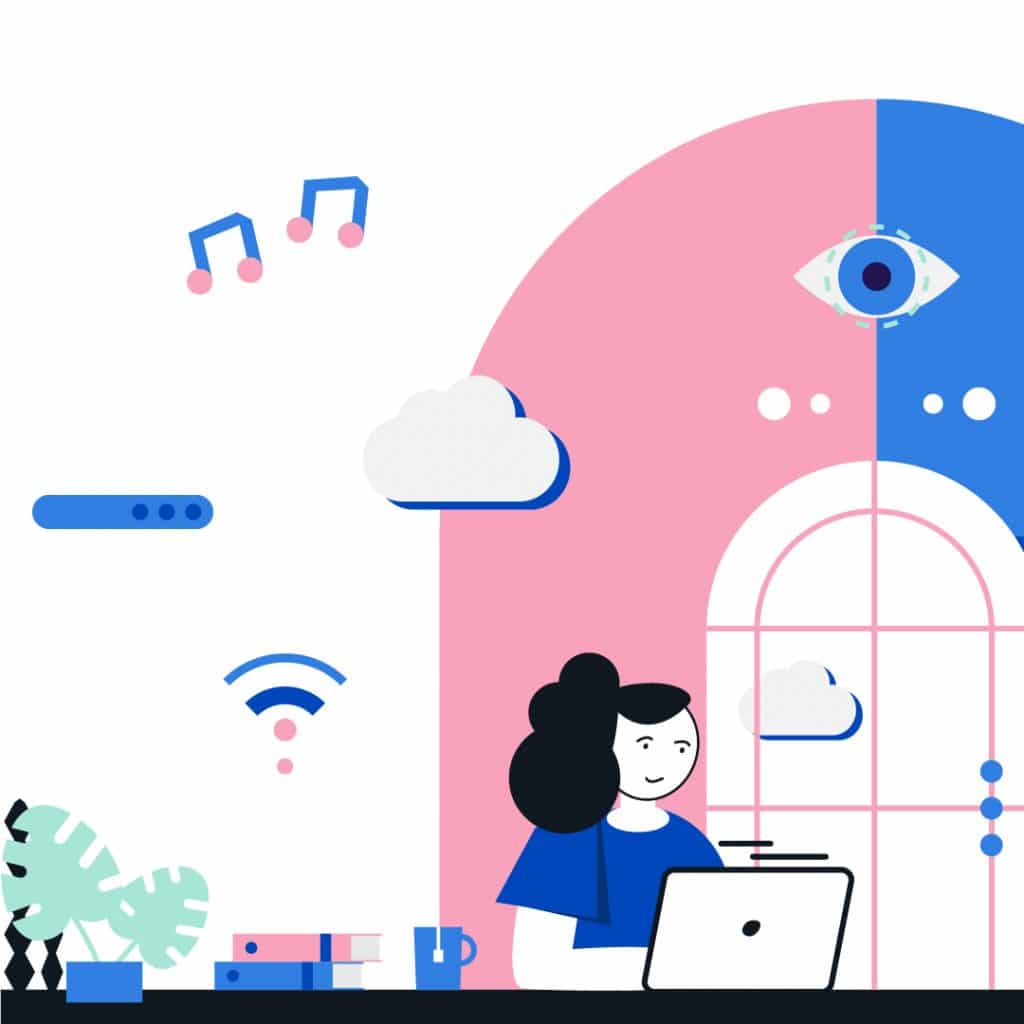The Processes and Benefits of User-Centered Design
Bad design is all around us. Designers often unthinkingly plug concepts into whatever it is they’re building, or do whatever is the easiest for them. Look around you, and you’ll see social media symbols on billboards, you’ll see bathroom doors where the gender is difficult to discern. Some design flaws are literally fatal, as is the case with pedestrian countdown meters, which have been proven to increase accidents and fatalities.

So what’s the thread that combines these flaws, from the harmless and silly to the actively harmful? All of these designs were created without the user in mind, and the appropriate amount of thought and research that comes with it. Today, the design world is focused on something called UCD, or User-Centered Design. This is the trend leading the field and making sure that design is smarter and more focused going forward.
So what is user-centered design?
User-centered design is a fairly simple concept that means exactly what it sounds like. It’s a process that tries to understand the journey that users go through and incorporate that into every single stage of design and development.
While the concept may be simple, the execution isn’t necessarily as easy. Understand the entire user experience is already difficult, and requires an interdisciplinary understanding, from psychologists to engineers to software professionals.
There are generally considered to be 4 guiding processes to UCD:
- How is it being used: Who is going to use the product, how are they going to use it, and what are the kinds of situations in which they plan on using it?
- What needs to happen: Different business require different things for a product to be successful. Likewise, user goals can change and whatever they are, you need to make sure you meet those goals.
- Creating design solutions: Stage by design, an iterative design must be built from what starts as a more broad outline to a complete design.
- Check the designs: Designs need to be checked with actual users to see what works and what doesn’t, in the exact same way that software needs to be tested.
This way of viewing things all comes together for an understanding of how the user interacts with the product in the real world, again requiring a holistic understanding of the user experience.

What are the benefits of UCD?
There are a number of benefits to UCD. Here we’ll highlight just a few, but before going into that we’d like to re-emphasize the difficulty in accurately executing UCD. It’s easy to say that you want to focus on every step of the user’s journey when you design, but it’s another thing entirely to incorporate all the research and man-power necessary. It requires a cohesive design team capable of working together towards common goals, where any team member not on the same page as everyone else can mess it up for the whole. Perhaps of those 4 steps, the most important one is that it’s iterative. This means that designers need to test, fail, and try once again with a method that includes analysis, interviews, generative strategies, and more. Failure is never easy, and repetition takes time and money.
Still, once you can focus the entire team properly and really center around the user experience, there ARE a large number of benefits to UCD:
1. Return on Investment
Just as we said above that focus on UCD requires more investment of both financial and human resources, the reason behind is that it produces an ROI you can be happy with. A lot of this is that if a product is unsuccessful, then your ROI is zero. This is all too common. In the ROI of the User Experience, Susan Weinschenk shows us that up to 15% of IT projects are abandoned and at least 50% of programmers’ time is spent on activities that were otherwise avoidable.
This means a UCD approach also can help you reduce development time and costs, reduce maintenance and redesign costs, and other resources. This is because everything is mapped out in advance, with any failures pushed to the opening part of the design process rather than the end. When the customer’s journey is mapped and the design is shaped in meticulous detail accordingly, there are fewer things that can go wrong rather than putting out a product that doesn’t reflect how the user will experience it and having to redevelop it on the fly.
2. Improved Performance
Again, as the user experience is mapped out, that necessarily means there are less likely to be user errors. The product is easier to use and it’s easier for the customer to learn how to use your product.
3. Increased Exposure
Because you’ve already done the initial research on what users are seeking, this increases the likelihood that users will flock to your product and continue to use it once they’ve found it. It means that you already know how users search for things similar to your product and you can develop it specifically to fill that void.
4. Problem Solving
So much of design revolves around finding solutions for problems, and the entire point of UCD is to understand the problem from its core. Rather than a design approach akin to throwing a load of spaghetti at the wall and seeing what sticks, UCD demands research and modeling to see how the user views the product, and solutions can be found within that context.
5. Holistic Vision of the Project
With the UCD approach, the entire project is mapped out. This means that expectations can easily be weathered so that they’re both in line with what’s feasible and what the user and developer want. When projects feature different stakeholders with different motivations and expectations, it’s almost impossible to produce a product that meets everyone’s goals.
Key Takeaways
A UCD approach clearly features a number of benefits and is the way forward for design teams looking to perfect their process. It makes projects more streamlined and, most importantly, has a more positive effect on the bottom line. However, this isn’t to say that designers should just think they can start thinking of the user a bit more and get away with it. A truly user-centered design approach requires a lot of work, a lot of thought, and a lot of input from many different people. And then it requires doing that over and over again till the design comes out as perfectly as possible. It’s intensive and consuming and cohesive, and that’s why the UCD approach is one that works better than almost anything else.
Reading Time: 7 minutes
Don’t miss out the latestCommencis Thoughts and News.

Elif İlbars / UX Researcher
04/11/2020
Reading Time: 7 minutes
Bad design is all around us. Designers often unthinkingly plug concepts into whatever it is they’re building, or do whatever is the easiest for them. Look around you, and you’ll see social media symbols on billboards, you’ll see bathroom doors where the gender is difficult to discern. Some design flaws are literally fatal, as is the case with pedestrian countdown meters, which have been proven to increase accidents and fatalities.

So what’s the thread that combines these flaws, from the harmless and silly to the actively harmful? All of these designs were created without the user in mind, and the appropriate amount of thought and research that comes with it. Today, the design world is focused on something called UCD, or User-Centered Design. This is the trend leading the field and making sure that design is smarter and more focused going forward.
Don’t miss out the latestCommencis Thoughts and News.
So what is user-centered design?
User-centered design is a fairly simple concept that means exactly what it sounds like. It’s a process that tries to understand the journey that users go through and incorporate that into every single stage of design and development.
While the concept may be simple, the execution isn’t necessarily as easy. Understand the entire user experience is already difficult, and requires an interdisciplinary understanding, from psychologists to engineers to software professionals.
There are generally considered to be 4 guiding processes to UCD:
- How is it being used: Who is going to use the product, how are they going to use it, and what are the kinds of situations in which they plan on using it?
- What needs to happen: Different business require different things for a product to be successful. Likewise, user goals can change and whatever they are, you need to make sure you meet those goals.
- Creating design solutions: Stage by design, an iterative design must be built from what starts as a more broad outline to a complete design.
- Check the designs: Designs need to be checked with actual users to see what works and what doesn’t, in the exact same way that software needs to be tested.
This way of viewing things all comes together for an understanding of how the user interacts with the product in the real world, again requiring a holistic understanding of the user experience.

What are the benefits of UCD?
There are a number of benefits to UCD. Here we’ll highlight just a few, but before going into that we’d like to re-emphasize the difficulty in accurately executing UCD. It’s easy to say that you want to focus on every step of the user’s journey when you design, but it’s another thing entirely to incorporate all the research and man-power necessary. It requires a cohesive design team capable of working together towards common goals, where any team member not on the same page as everyone else can mess it up for the whole. Perhaps of those 4 steps, the most important one is that it’s iterative. This means that designers need to test, fail, and try once again with a method that includes analysis, interviews, generative strategies, and more. Failure is never easy, and repetition takes time and money.
Still, once you can focus the entire team properly and really center around the user experience, there ARE a large number of benefits to UCD:
1. Return on Investment
Just as we said above that focus on UCD requires more investment of both financial and human resources, the reason behind is that it produces an ROI you can be happy with. A lot of this is that if a product is unsuccessful, then your ROI is zero. This is all too common. In the ROI of the User Experience, Susan Weinschenk shows us that up to 15% of IT projects are abandoned and at least 50% of programmers’ time is spent on activities that were otherwise avoidable.
This means a UCD approach also can help you reduce development time and costs, reduce maintenance and redesign costs, and other resources. This is because everything is mapped out in advance, with any failures pushed to the opening part of the design process rather than the end. When the customer’s journey is mapped and the design is shaped in meticulous detail accordingly, there are fewer things that can go wrong rather than putting out a product that doesn’t reflect how the user will experience it and having to redevelop it on the fly.
2. Improved Performance
Again, as the user experience is mapped out, that necessarily means there are less likely to be user errors. The product is easier to use and it’s easier for the customer to learn how to use your product.
3. Increased Exposure
Because you’ve already done the initial research on what users are seeking, this increases the likelihood that users will flock to your product and continue to use it once they’ve found it. It means that you already know how users search for things similar to your product and you can develop it specifically to fill that void.
4. Problem Solving
So much of design revolves around finding solutions for problems, and the entire point of UCD is to understand the problem from its core. Rather than a design approach akin to throwing a load of spaghetti at the wall and seeing what sticks, UCD demands research and modeling to see how the user views the product, and solutions can be found within that context.
5. Holistic Vision of the Project
With the UCD approach, the entire project is mapped out. This means that expectations can easily be weathered so that they’re both in line with what’s feasible and what the user and developer want. When projects feature different stakeholders with different motivations and expectations, it’s almost impossible to produce a product that meets everyone’s goals.
Key Takeaways
A UCD approach clearly features a number of benefits and is the way forward for design teams looking to perfect their process. It makes projects more streamlined and, most importantly, has a more positive effect on the bottom line. However, this isn’t to say that designers should just think they can start thinking of the user a bit more and get away with it. A truly user-centered design approach requires a lot of work, a lot of thought, and a lot of input from many different people. And then it requires doing that over and over again till the design comes out as perfectly as possible. It’s intensive and consuming and cohesive, and that’s why the UCD approach is one that works better than almost anything else.




